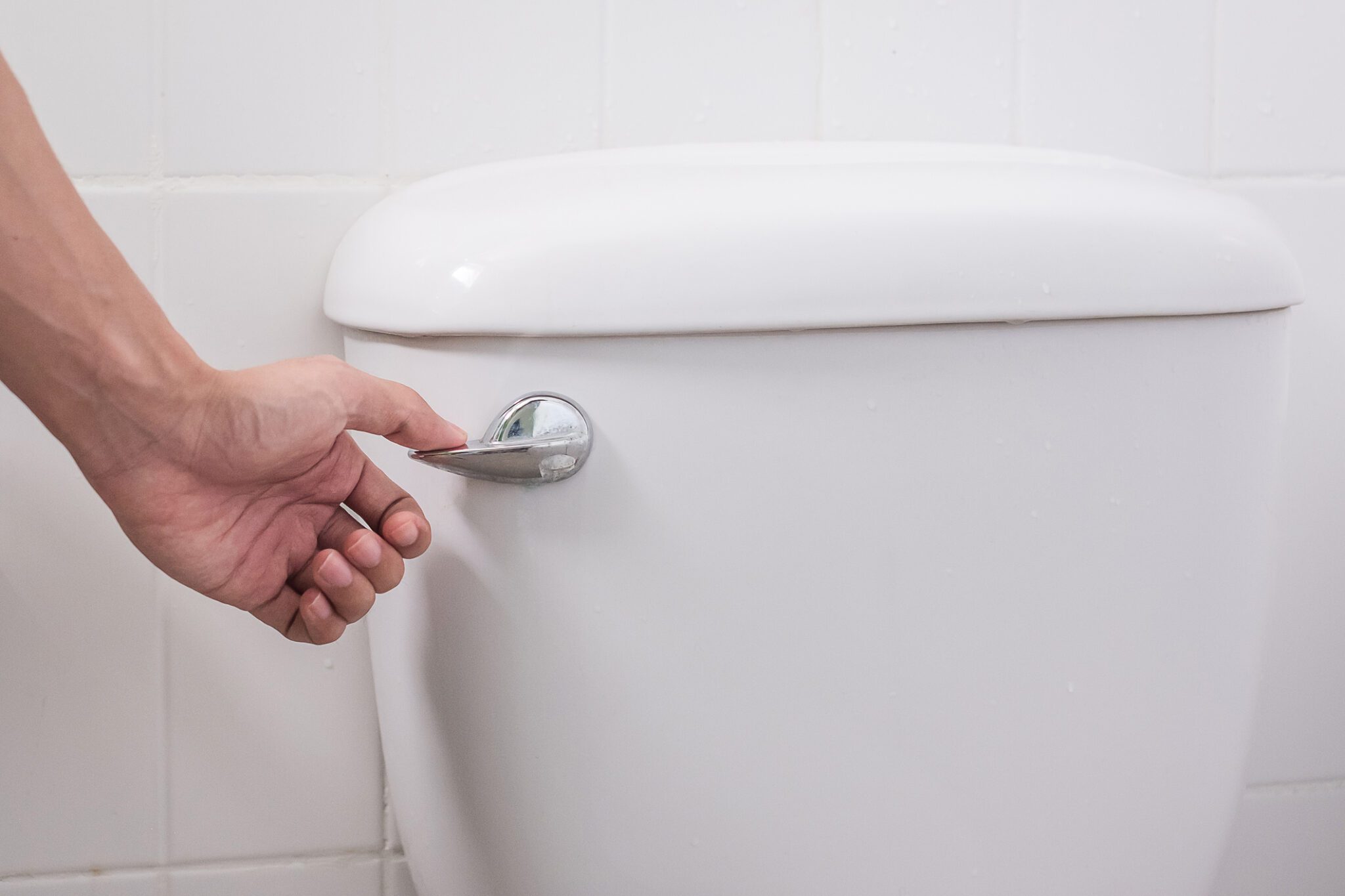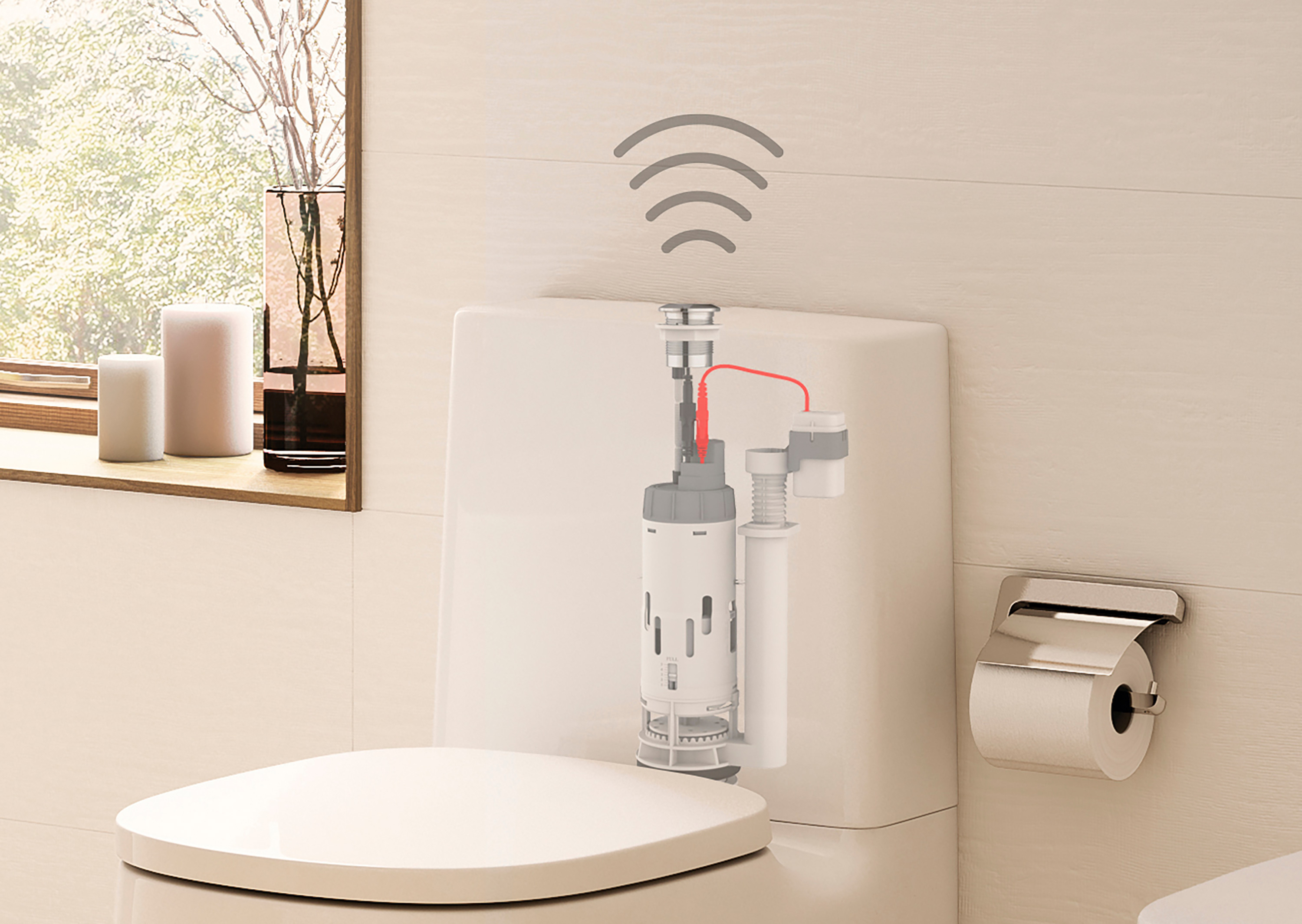Common Causes of Toilet Flushing Issues: Bathroom Toilet Not Flushing Properly
A toilet that doesn’t flush properly can be a frustrating and inconvenient problem. It can lead to unpleasant odors, potential health hazards, and even damage to your plumbing system. Understanding the common causes of toilet flushing issues can help you diagnose the problem and find the right solution.
Clogged Toilet Bowl
A clogged toilet bowl is one of the most frequent causes of flushing problems. This occurs when an obstruction blocks the flow of water from the bowl to the drainpipe.
Causes of Clogged Toilet Bowl
- Excessive Toilet Paper: Using too much toilet paper can overwhelm the toilet’s capacity and lead to a clog.
- Foreign Objects: Flushing items like wipes, sanitary products, paper towels, or even small toys can easily cause a blockage.
- Fecal Matter: Large amounts of fecal matter can also contribute to clogging, especially if the toilet is old or the drainpipe is narrow.
Symptoms of Clogged Toilet Bowl
- Slow Drainage: The water in the bowl drains slowly after flushing.
- Water Level Rise: The water level in the bowl rises after flushing, sometimes even overflowing.
- Gurgling Sounds: You may hear gurgling noises coming from the toilet or the drainpipe.
Impact of Clogged Toilet Bowl
A clogged toilet bowl can prevent the toilet from flushing properly, leading to a buildup of waste and an unpleasant odor. It can also cause the water level to rise, potentially overflowing and causing damage to your bathroom floor.
Troubleshooting Steps for a Non-Flushing Toilet

A toilet that doesn’t flush properly can be a frustrating problem. Fortunately, many common issues can be resolved with some basic troubleshooting. This section Artikels a step-by-step guide to help you diagnose and fix a non-flushing toilet.
Troubleshooting Steps for a Non-Flushing Toilet
The following steps will help you identify the cause of the problem and resolve it.
- Check the Water Level in the Tank: The water level in the toilet tank should be just below the overflow tube. If the water level is too low, the toilet may not have enough water to flush properly. To adjust the water level, you can use the float arm, which is attached to the float ball. Raise or lower the float arm to adjust the water level.
- Inspect the Flapper: The flapper is a rubber seal that prevents water from flowing from the tank to the bowl when the toilet is not in use. If the flapper is worn, cracked, or not sealing properly, it can cause the toilet to leak or flush poorly. To check the flapper, flush the toilet and observe the tank. If the water is continuously flowing into the bowl, the flapper is likely the problem. To replace the flapper, simply lift the lid of the tank and remove the old flapper. Then, install the new flapper and secure it with the chain.
- Examine the Fill Valve: The fill valve is responsible for filling the tank with water after a flush. If the fill valve is malfunctioning, it can prevent the tank from filling properly, leading to a weak flush. To check the fill valve, listen for any unusual noises, such as rattling or leaking. If the valve is not filling the tank properly, it may need to be replaced.
- Inspect the Flush Valve: The flush valve is the mechanism that releases water from the tank to the bowl. If the flush valve is clogged or malfunctioning, it can cause the toilet to flush poorly. To check the flush valve, flush the toilet and observe the water flow. If the water flow is weak or inconsistent, the flush valve may be clogged or need replacement.
- Check for Clogs in the Drainpipe: If the toilet is slow to drain or doesn’t flush at all, there may be a clog in the drainpipe. To check for a clog, you can use a plunger or a drain snake. If you have a plunger, insert it into the drainpipe and push and pull vigorously. If you have a drain snake, insert it into the drainpipe and twist it to break up any clogs.
Flowchart for Troubleshooting a Non-Flushing Toilet
This flowchart provides a visual representation of the decision-making process during troubleshooting.
- Start: Is the toilet flushing at all?
- Yes: Proceed to step 2.
- No: Proceed to step 6.
- Check Water Level: Is the water level in the tank too low?
- Yes: Adjust the float arm to raise the water level. Proceed to step 1.
- No: Proceed to step 3.
- Inspect Flapper: Is the flapper worn, cracked, or not sealing properly?
- Yes: Replace the flapper. Proceed to step 1.
- No: Proceed to step 4.
- Examine Fill Valve: Is the fill valve malfunctioning?
- Yes: Replace the fill valve. Proceed to step 1.
- No: Proceed to step 5.
- Inspect Flush Valve: Is the flush valve clogged or malfunctioning?
- Yes: Clean or replace the flush valve. Proceed to step 1.
- No: Proceed to step 6.
- Check for Clogs: Is there a clog in the drainpipe?
- Yes: Clear the clog using a plunger or drain snake. Proceed to step 1.
- No: Contact a plumber. Proceed to step 7.
- End: The toilet should now be flushing properly.
Troubleshooting Table for Non-Flushing Toilet Issues
This table provides a detailed breakdown of common symptoms, possible causes, troubleshooting steps, and expected outcomes.
| Symptom | Possible Cause | Troubleshooting Step | Expected Outcome |
|---|---|---|---|
| Toilet flushes weakly | Low water level in the tank | Adjust the float arm to raise the water level. | The toilet should flush with more force. |
| Toilet flushes weakly | Worn or cracked flapper | Replace the flapper. | The toilet should flush with more force. |
| Toilet flushes weakly | Clogged flush valve | Clean or replace the flush valve. | The toilet should flush with more force. |
| Toilet flushes slowly | Clogged drainpipe | Clear the clog using a plunger or drain snake. | The toilet should drain more quickly. |
| Toilet doesn’t flush at all | Malfunctioning fill valve | Replace the fill valve. | The toilet should fill with water and flush properly. |
| Toilet doesn’t flush at all | Clogged flush valve | Clean or replace the flush valve. | The toilet should flush properly. |
| Toilet doesn’t flush at all | Clogged drainpipe | Clear the clog using a plunger or drain snake. | The toilet should flush properly. |
DIY Solutions for Toilet Flushing Problems

Before resorting to professional plumbing services, homeowners can attempt to resolve common toilet flushing issues through simple DIY solutions. These fixes often involve addressing minor clogs or adjustments to the toilet’s internal mechanisms.
Cleaning the Toilet Bowl and Tank
Regular cleaning of the toilet bowl and tank can prevent clogs and improve flushing efficiency.
- Tools and Materials: Toilet bowl cleaner, a toilet brush, a sponge, and a bucket of clean water.
- Procedure:
- Pour toilet bowl cleaner into the bowl and allow it to sit for the recommended time.
- Scrub the bowl thoroughly with a toilet brush, paying attention to the rim and under the waterline.
- Flush the toilet to remove the cleaner and debris.
- Use a sponge to clean the inside of the tank, removing any mineral deposits or buildup.
- Flush the toilet again to ensure the tank is clean.
Checking and Cleaning the Flapper
A faulty flapper can prevent the toilet from filling properly, leading to weak flushing.
- Tools and Materials: Screwdriver, new flapper (if necessary).
- Procedure:
- Flush the toilet and observe the flapper as it closes. If it doesn’t seal tightly or leaks, it needs to be replaced.
- Turn off the water supply to the toilet.
- Remove the tank lid and locate the flapper.
- Unscrew the flapper from the overflow tube.
- Inspect the flapper for cracks, tears, or warping.
- If the flapper is damaged, replace it with a new one.
- Reattach the new flapper to the overflow tube and tighten the screw.
- Turn the water supply back on and test the flush.
Adjusting the Fill Valve
The fill valve controls the water level in the tank. An improperly adjusted fill valve can lead to low water levels, resulting in weak flushes.
- Tools and Materials: Screwdriver.
- Procedure:
- Flush the toilet and observe the water level in the tank. The water level should be about an inch below the overflow tube.
- Turn off the water supply to the toilet.
- Remove the tank lid and locate the fill valve.
- Adjust the fill valve by turning the adjustment screw. Turning the screw clockwise will lower the water level, while turning it counterclockwise will raise it.
- Once the water level is adjusted, turn the water supply back on and test the flush.
Checking the Flush Valve
The flush valve releases water from the tank to the bowl, creating the flushing force. A clogged or malfunctioning flush valve can hinder proper flushing.
- Tools and Materials: Screwdriver, pliers, a small brush, a bucket.
- Procedure:
- Turn off the water supply to the toilet.
- Remove the tank lid and locate the flush valve.
- Unscrew the flush valve from the tank and remove it.
- Inspect the flush valve for clogs or debris. Clean any obstructions with a small brush.
- If the flush valve is damaged, replace it with a new one.
- Reattach the flush valve to the tank and tighten the screws.
- Turn the water supply back on and test the flush.
Checking the Toilet Bowl and Drain, Bathroom toilet not flushing properly
A clog in the toilet bowl or drain can prevent water from flowing properly, resulting in a weak flush.
- Tools and Materials: Plunger, drain snake (if necessary).
- Procedure:
- Attempt to clear the clog with a plunger. Place the plunger over the drain opening and push and pull vigorously.
- If the plunger doesn’t work, use a drain snake to clear the clog. Insert the drain snake into the drain opening and twist it to break up the obstruction.
- Flush the toilet to test if the clog has been cleared.
